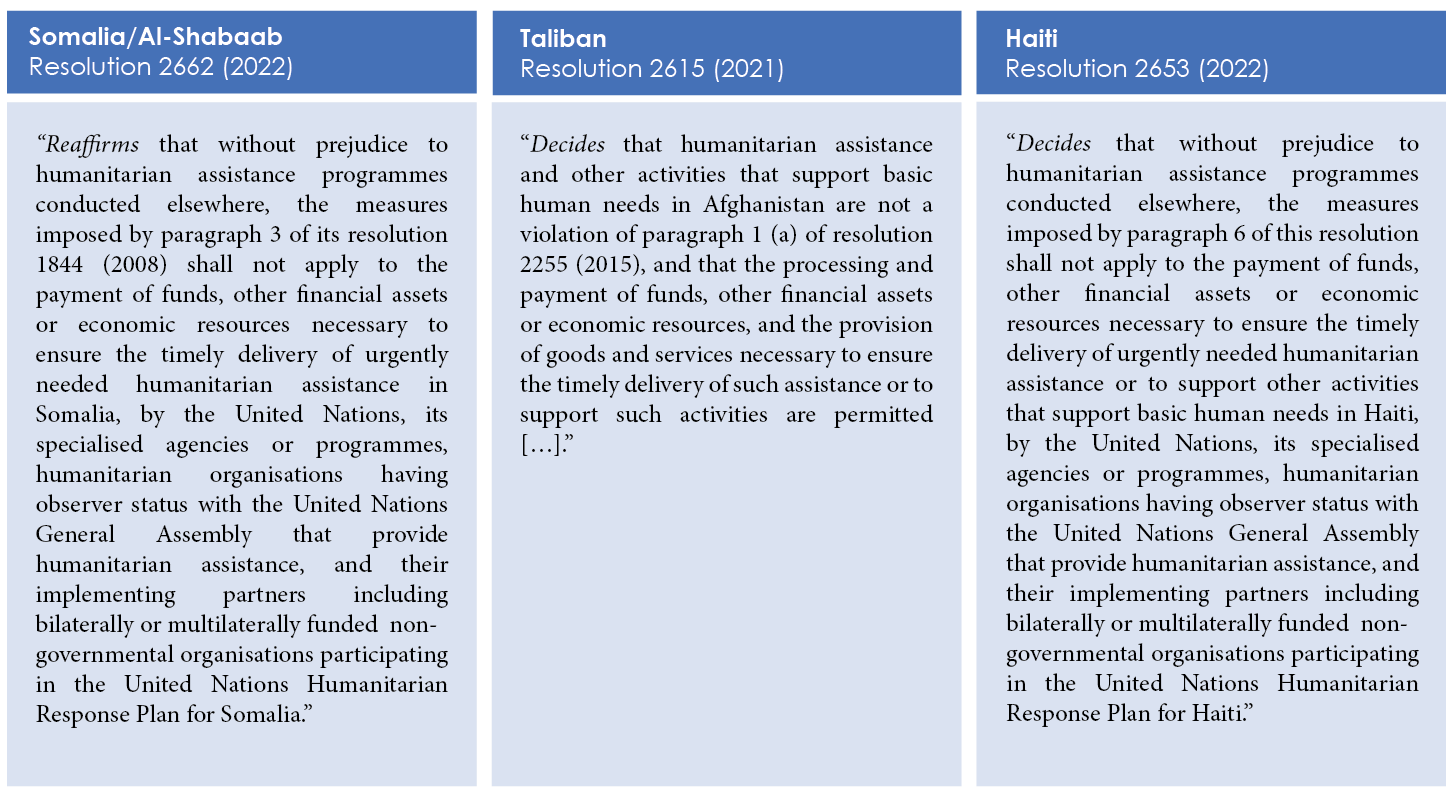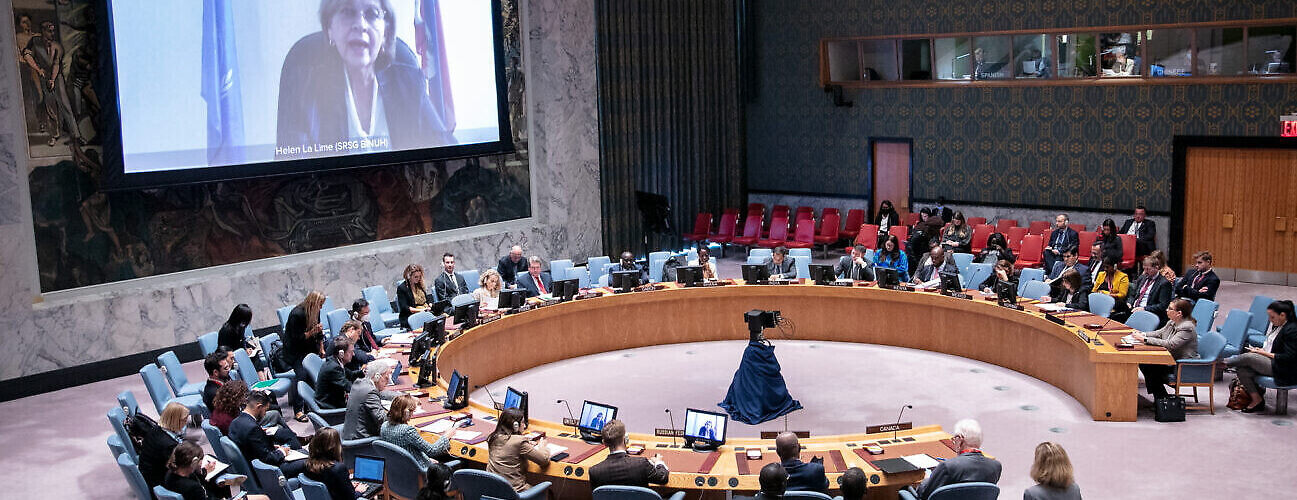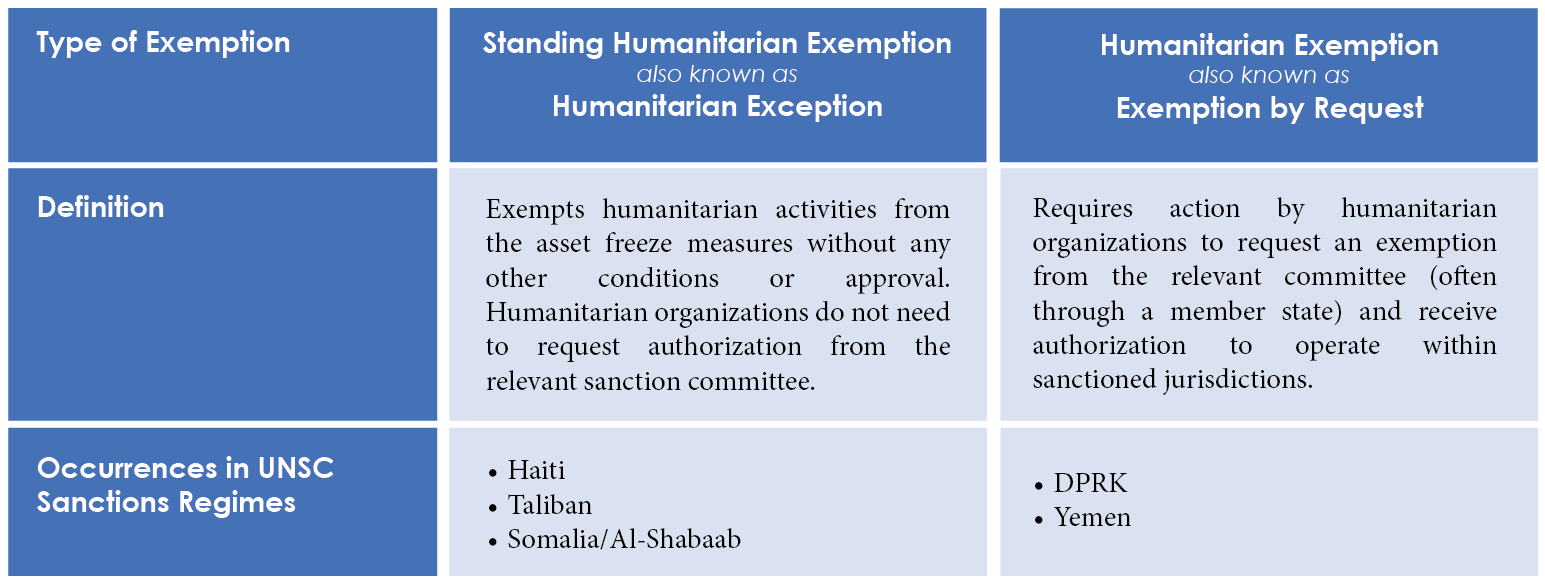Helen La Lime (on screen), Special Representative of the Secretary-General for Haiti and Head of the United Nations Integrated Office in Haiti, briefs the Security Council meeting on the question concerning Haiti, September 26, 2022. (UN Photo/Ariana Lindquist)
In October, the United Nations Security Council (UNSC) established a sanctions regime targeting individuals who “threaten the peace, security or stability of Haiti.” Since the assassination of President Jovenel Moïse in 2021, the country has been plagued by rising gang violence and criminal activities.
This is the first new sanctions regime in five years from the Security Council; the last one, concerning Mali, was passed in 2017. The resolution—jointly tabled by the United States and Mexico—was supported by all Council members, which is notable especially this year, as the Security Council has only maintained “minimal functionality” since Russia’s invasion of Ukraine.
Among other milestones in the new sanctions regime—including a possible role of the Ombudsperson in delisting requests, and the inclusion of perpetration of sexual and gender-based violence as a stand-alone criterion for designation—is the standing humanitarian exemption, which represents another building block for safeguarding action in UNSC sanctions regimes. The standing humanitarian exemption effectively exempts humanitarian activities from the asset freeze measures without any other conditions or approval needed. This new humanitarian carve-out is critical to effectively respond to the pressing humanitarian needs in Haiti, as it will help alleviate obstacles related to overcompliance with sanctions, including from donors, the financial and private sector, and humanitarian organizations themselves.
The exemption for Haiti also shows how a humanitarian carve-out is consistent with the overall objectives of a sanctions regime. Indeed, one of the criteria for listing under this regime includes actions that obstruct delivery of, access to, or distribution of humanitarian assistance in Haiti. This underscores the compatibility between sanctions and humanitarian action, acknowledging that it would defeat the purpose if the regime created obstacles for humanitarian assistance.
Building Blocks
For more than a decade, research and experience by humanitarian and civil society organizations as well as legal experts have repeatedly shown that sanctions can have negative impacts on humanitarian action. This has formed the basis of calls for action by sanctions authorities at the international and national level, including in adopting humanitarian carve-outs; issuing technical guidance; increasing multistakeholder dialogues; mandating impact assessment; building in sunset clause; and incentivizing the financial sector to be less risk averse, all with the purpose of ensuring the effective delivery of humanitarian assistance in sanctioned jurisdictions.
Since early 2021, the Security Council has begun to take steps to include humanitarian-related language in its sanctions regimes. For instance, an intent clause “stressing that the measures imposed […] are not intended to have adverse humanitarian consequences for the civilian population” has now been added to almost all existing regimes. This has also been added to the sanctions regime on ISIL/al-Qaida, which shows the intent of the UNSC to apply this principle even to contexts where ISIL, al-Qaida, and associated individuals, groups, undertakings, and entities associated with them operate. Interestingly, the UNSC had already referred to humanitarian activities in resolutions 2462 and 2482 (2019) on counterterrorism urging states “to take into account the potential effects of [counterterrorism measures] on exclusively humanitarian activities.” Taken together, this shows that there are areas of convergence, even in the most complex contexts.
The fact that the standing humanitarian exemption was added in Haiti from the outset also signals a shift within the UNSC toward recognizing the need to anticipate and mitigate the adverse impacts of sanctions on humanitarian action and ensure that targeted sanctions remain so in their implementation. The two other UN sanctions regimes—against Somalia/Al-Shabaab and the Taliban—include humanitarian exceptions that were added years later, and in both cases, the inclusion of the humanitarian carve-out was triggered in response to worsening humanitarian situations in the countries, exacerbated by the lingering impacts of the 2011 famine in Somalia and the humanitarian crisis in Afghanistan following the seizure of power by the Taliban in August 2021.
While the adoption of standing humanitarian exemptions has been rare and only three currently exist, the Haiti one means two of the standing humanitarian exemptions have been adopted over the past 12 months (the other was the December 2021 Taliban sanctions regime), showing that humanitarian concerns have finally gained traction at the UN Security Council.
Moving Away From a Heterogeneous Framework
Over the years, the Security Council has developed a heterogenous approach to making carve-outs for humanitarian activities, leading to different standards applied to different sanctions regimes. This can lead to confusion among practitioners; further compound overcompliance by donors, private sectors, and humanitarian organizations; and be costly to manage for UN sanctions-related entities.
In addition to the standing humanitarian exemption in the Somalia, Taliban, and Haiti regimes—which exempts humanitarian activities from the asset freeze measures without any other conditions or approval needed—the UNSC has adopted other forms of humanitarian carve-outs. The sanctions regimes for the Democratic People’s Republic of Korea and for Yemen include a “humanitarian exemption by request,” which means that humanitarian organizations need to send a request (often through a member state) to the relevant sanctions committee and wait for an authorization to conduct humanitarian activities within sanctioned jurisdictions. This process has proven cumbersome for humanitarian organizations and causes delays in the provision of humanitarian assistance.
A typology of the humanitarian carve-outs (source: UNSHA)
There are also differences in the scope and coverage of the three existing standing humanitarian exemptions themselves. The Haiti carve-out takes language from both the Taliban and the Somalia sanctions regimes. Similarly to the Somali sanctions regime, it makes explicit that asset freeze measures do not apply to “the payment of funds, other financial assets or economic resources necessary to ensure the timely delivery of urgently needed humanitarian assistance” in the country, though it expands this to include types of payment that “support other activities that support basic human needs,” as is found in the Taliban sanctions regime. While there is no agreement upon an international definition of “basic human needs,” the latter is understood to go beyond immediate life-saving assistance. The newest regime on Haiti also specifies which providers are exempt from the asset freeze measures. This language is similar to the Somalia sanctions regime and thus is more restrictive than the Taliban sanctions regime, which does not constrain its scope to any identified entities.
 Comparing language from Haiti, Taliban, and Somalia UN sanctions regimes. (click image to enlarge)
Comparing language from Haiti, Taliban, and Somalia UN sanctions regimes. (click image to enlarge)
Standardization Across UN Sanctions Regimes
Humanitarian needs are skyrocketing around the world, with more than 330 million people estimated to need assistance in 2023, a 25 percent increase compared to 2022. Adopting a standing humanitarian exemption that cuts across all UNSC sanctions regimes–including 1267 ISIL/Al-Qaida–would accomplish what member states have agreed to do through the adoption of “intent clause,” and have generally voiced support for on multiple occasions: to not create any harmful impact on the populations of sanctioned jurisdictions, and be fully compliant with international humanitarian and human rights law in sanctions regimes.
Adopting such a cross-cutting exemption at the UNSC level would enable a carve-out for humanitarian activities to trickle down to regional and national sanctions regimes, with potentially even more welcomed effects on humanitarian aid. Such a decision would also help end the debates around the incompatibility of sanctions and humanitarian action. As the design of the Haiti regime has shown, their objectives can coexist.
What would a cross-cutting humanitarian carve-out look like? The existing standing humanitarian carve-outs, like the ones in the Haiti, Somalia, and Taliban regimes, are good models. They are written to ensure the effective and timely delivery of humanitarian action in sanctioned jurisdictions, and the adequate planning of humanitarian responses—something impossible to achieve with the “humanitarian exemption by request” model, which should be avoided. A standing humanitarian exemption should extend to all humanitarian activities and others supporting basic human needs, as is the case in the current Taliban and Haiti carve-outs. It is also recommended that the UNSC does not restrict the scope of the carve-out to a selected list of actors, but instead covers all impartial humanitarian organizations, in addition to UN entities. The UNSC could also consider protecting peacebuilding and human rights activities, which have been found to be curtailed by sanctions and counterterrorism measures.
In the past year, there have been debates about the regularity of monitoring and reporting requirements for a humanitarian carve-out. Spacing them out—no less than a year apart—allows for coordination with humanitarian organizations and implementing partners on their own practices and results, and avoids overburdening existing resources and capacity (in this regard, the upcoming review of the standing humanitarian exemption in the Taliban sanctions regime in December may provide some good lessons). Such reviews and briefings by the Emergency Relief Coordinator to the UNSC should not only enable to identify risks of aid diversion, but also identify any remaining impediments to humanitarian activities in sanctioned jurisdictions. In case challenges persist, humanitarian organizations should be further supported to strengthen their due diligence efforts or address remaining hurdles. In parallel, such efforts could be reinforced by the systematic appointment of a humanitarian expert to all UNSC panels of experts on sanctions. In addition, guidance on implementation should be issued by the UN Secretariat and widely disseminated to foster a common understanding of the scope of the asset freeze measures and the activities which are exempt from it, to support member states, donors, financial actors, and humanitarian organizations.
After years of evidence-based research, lessons painfully learned from humanitarian organizations, policy debates, and incremental progress, adopting cross-cutting humanitarian carve-outs across all sanctions regimes would be a step forward in not only creating a unified framework consistent with the UN Charter, but guaranteeing that humanitarian assistance in sanctioned contexts is provided to people in need.
Update: On Friday December 9, 2022, the UNSC adopted Resolution 2664, a cross-cutting and standing humanitarian exemption to all its sanctions regimes.
Agathe Sarfati is a Senior Policy Analyst at the Brian Urquhart Center for Peace Operations at the International Peace Institute (IPI).






